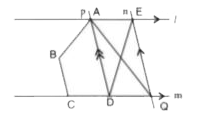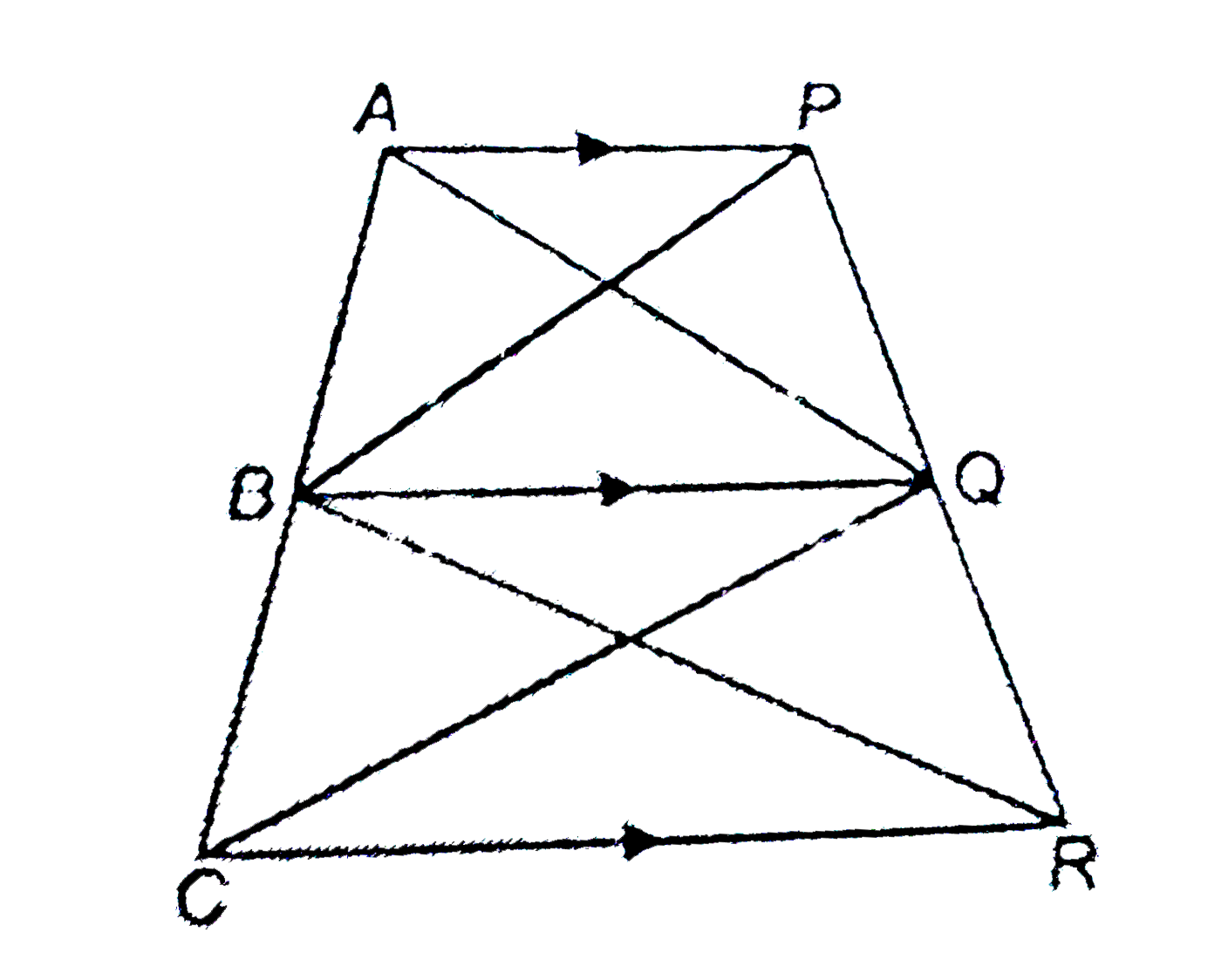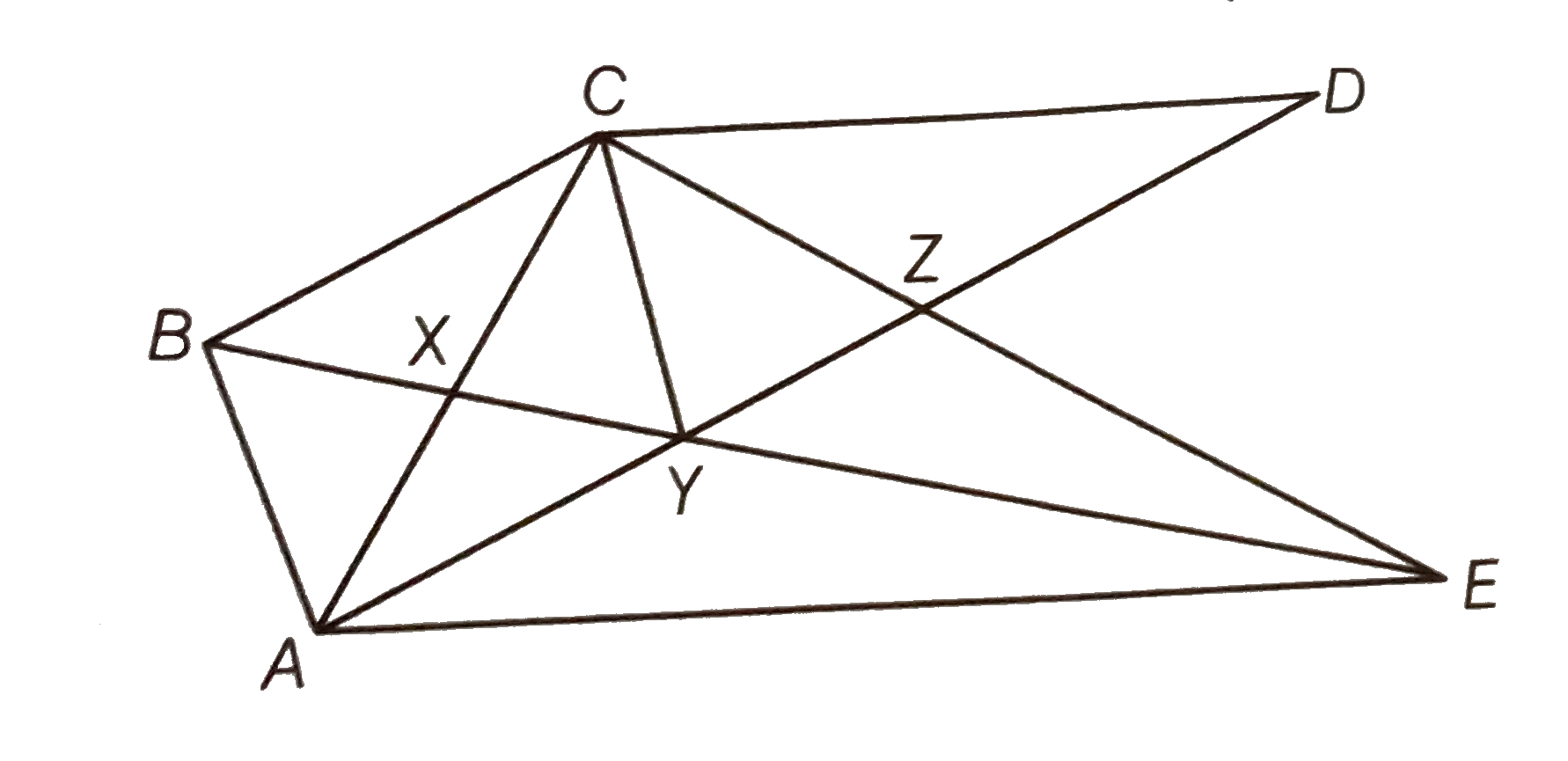If the median of a △ABC intersect at G. show that ar (△AGC) = ar (△AGB) = ar (△BGC) = 1/3 ar (△ABC)
To prove that the areas of triangles △AGC, △AGB, and △BGC are equal to 13 of the area of triangle △ABC, we can follow these steps:
Step 1: Understand the Medians
In triangle ABC, let AM, BN, and CL be the medians from vertices A, B, and C respectively. These medians intersect at point G, which is the centroid of the triangle.
Hint: Remember that the centroid divides each median in a 2:1 ratio.
Step 2: Establish the Areas of Triangles
The area of triangle ABC can be expressed as the sum of the areas of triangles AGB, AGC, and BGC:
Area(△ABC)=Area(△AGB)+Area(△AGC)+Area(△BGC)
Hint: Think about how the areas of the smaller triangles relate to the area of the larger triangle.
Step 3: Use the Property of Medians
Since G is the centroid, it divides each median into two segments where the segment connecting the vertex to the centroid is twice the length of the segment connecting the centroid to the midpoint of the opposite side. Therefore, the area of triangles AGB and AGC can be shown to be equal because they share the same base AG and have the same height from point B and C respectively.
Hint: Consider how the height from a vertex to the opposite side affects the area of the triangles.
Step 4: Show the Areas are Equal
From the properties of the centroid:
Area(△AGB)=Area(△AGC)
And similarly, since G is also the centroid for triangles AGB and BGC:
Area(△AGB)=Area(△BGC)
Hint: Use the fact that the centroid divides the triangle into smaller triangles of equal area.
Step 5: Combine the Areas
Let x=Area(△AGB)=Area(△AGC)=Area(△BGC). Then we can express the area of triangle ABC as:
Area(△ABC)=x+x+x=3x
Step 6: Solve for x
From the equation above, we can find:
x=13Area(△ABC)
Thus, we have:
Area(△AGB)=Area(△AGC)=Area(△BGC)=13Area(△ABC)
Conclusion
We have shown that:
Area(△AGB)=Area(△AGC)=Area(△BGC)=13Area(△ABC)
Hence proved.
---
In triangle ABC, let AM, BN, and CL be the medians from vertices A, B, and C respectively. These medians intersect at point G, which is the centroid of the triangle.
The area of triangle ABC can be expressed as the sum of the areas of triangles AGB, AGC, and BGC:
Area(△ABC)=Area(△AGB)+Area(△AGC)+Area(△BGC)
Since G is the centroid, it divides each median into two segments where the segment connecting the vertex to the centroid is twice the length of the segment connecting the centroid to the midpoint of the opposite side. Therefore, the area of triangles AGB and AGC can be shown to be equal because they share the same base AG and have the same height from point B and C respectively.
From the properties of the centroid:
Area(△AGB)=Area(△AGC)
And similarly, since G is also the centroid for triangles AGB and BGC:
Area(△AGB)=Area(△BGC)
Let x=Area(△AGB)=Area(△AGC)=Area(△BGC). Then we can express the area of triangle ABC as:
Area(△ABC)=x+x+x=3x
From the equation above, we can find:
x=13Area(△ABC)
Area(△AGB)=Area(△AGC)=Area(△BGC)=13Area(△ABC)
We have shown that:
Area(△AGB)=Area(△AGC)=Area(△BGC)=13Area(△ABC)
Hence proved.
Similar Questions
If the medians of a △ABC intersect at G, show that ar(△AGB)=ar(△AGC)=ar(△BGC)=13ar(△ABC). GIVEN : △ABC such that its medians AD,BE and CF intersect at G TO PROVE : ar(△AGB)=ar(△BGC)=ar(△CGA)=13ar(△ABC).
View SolutionIn fig, ABC and BDE are two equilateral triangles such that D is the mid-point of BC. If AE intersects BC at F, show that: (i) ar(BDE)= 1/4 ar(ABC) (ii) ar(BDE)= 1/2 ar(BAE)
View SolutionThe medians of ΔABC intersect at point G. Prove that:
area of ΔAGB=13× area of ΔABC
View SolutionAD, BE and CF asre the medians of a triangle ASBC intersectiing in G. Show that △AGB=△BGC=△CGA=13△ABC.
View SolutionUse the informations given in the following figure to show that ar. (ABCQ) = ar (ABCDE)

[Given : l // m and p//n ]
View SolutionIn the given figure, AP||BQ||CR. Prove that ar(ΔAQC)=ar(ΔPBR)

View SolutionGiven a parallelogram ABCD where X and Y are the mid-points of the sides BC and CD respectively . Prove that:
ar (ΔAXY)=38×ar(/gm)ABCD
View SolutionIn ΔABC , if L and M are the points on AB and AC, respectively such that LM∣∣BC. Prove that ar(ΔLOB)=ar(ΔMOC).
View SolutionIn figure, CD∣∣AE and CY∣∣BA. Prove that ar(ΔCBX)=ar(ΔAXY).

View SolutionIf the points A (x,y),(−1,3)and(5,−3) ar collinear, then show that x + y = 2.
View Solution
